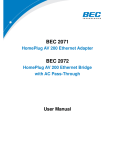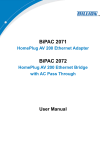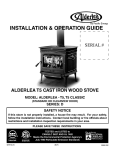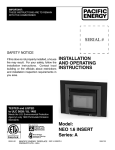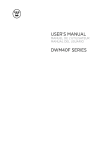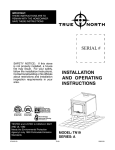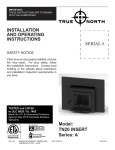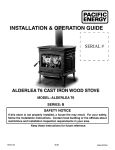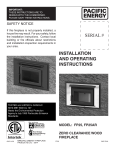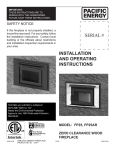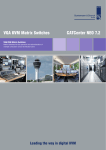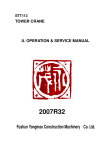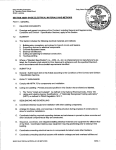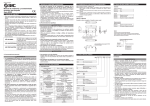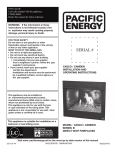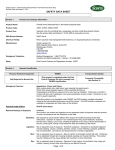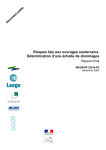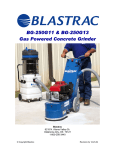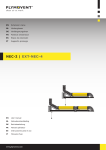Download INSTALLATION AND OPERATING INSTRUCTIONS SERIAL #
Transcript
IMPORTANT: THESE INSTRUCTIONS ARE TO REMAIN WITH THE HOMEOWNER SERIAL # SAFETY NOTICE If this stove is not properly installed, a house fire may result. For your safety, follow the installation instructions. Contact local building or fire officials about restrictions and installation inspection requirements in your area. INSTALLATION AND OPERATING INSTRUCTIONS TESTED and LISTED to CAN/ULC S627 AND UL 1482 Meets the Environmental Protection Agency's July 1990 Particulate Emission Standards MODEL - NEO 1.6 SERIES - A 140714-24 NEO16 5055.700 Contents Safety .................................................................................................................... 3 Creosote Formation and Need for Removal ....................................................................... 3 Chimney Fires..................................................................................................................... 3 In Case of a Chimney Fire .................................................................................................. 3 Avoiding a Chimney Fire ..................................................................................................... 3 Operation.............................................................................................................. 4 Wood Selection................................................................................................................... 4 How to Test Your Wood ....................................................................................................... 4 Lighting for the First Time ................................................................................................... 4 Lighting a Fire ..................................................................................................................... 4 Normal Operation ............................................................................................................... 4 Restarting After Extended or Overnight Burns.................................................................... 5 Over Firing .......................................................................................................................... 5 More Wood, More Heat....................................................................................................... 5 Proper Draft ........................................................................................................................ 5 Ash Removal ...................................................................................................................... 5 Disposal of Ashes ............................................................................................................... 5 Storing Wood Beneath Unit ................................................................................................ 5 Maintenance ......................................................................................................... 6 Baffle Removal.................................................................................................................... 6 Maintenance Checks ........................................................................................... 7 Assembly .............................................................................................................. 8 Crate Removal .................................................................................................................... 8 Side Panel Installation ........................................................................................................ 8 NEO 1.6 Dimensions ............................................................................................ 8 Floor Protector ................................................................................................... 10 Combustion Air .................................................................................................. 10 Residential Installation ..................................................................................... 11 Clearances ....................................................................................................................... 11 Chimney and Connector ................................................................................................... 11 Double-Wall Connector ..................................................................................................... 11 Single-Wall Connector ...................................................................................................... 11 Procedure ......................................................................................................................... 11 Mobile Home Installation .................................................................................. 12 Clearances ....................................................................................................................... 12 Procedure:......................................................................................................................... 13 Through Wall Installations................................................................................................. 15 Optional Blower ................................................................................................. 16 Blower Operation .............................................................................................................. 16 Optional Outside Air Adaptor ............................................................................................ 16 Troubleshooting................................................................................................. 17 Replacement Parts - NEO 1.6........................................................................................... 18 Understanding & Operating Your Pacific Energy Stove..................................................... 19 Label ................................................................................................................................. 23 PLEASE SAVE THESE INSTRUCTIONS NOTE: WE STRONGLY RECOMMEND THAT SMOKE DETECTORS BE INSTALLED. If smoke detectors have been previously installed, you may notice that they are operating more frequently. This may be due to curing of stove paint or fumes caused by accidentally leaving the fire door open. Do not disconnect the detectors. If necessary, relocate them to reduce their sensitivity. SAFETY NOTICE: If this stove is not properly installed, a house fire may result. For your safety, follow the installation instructions. Contact local building or fire officials about restrictions and installation inspection requirements in you area. Please read this entire manual before you install and use your new room heater. Failure to follow instructions may result in property damage, bodily injury, or even death. 2 NEO16 140714-24 Safety Creosote Formation and Need for Removal When wood is burned slowly, it produces tar and other organic vapours, which combine with expelled moisture to form creosote. The creosote vapours condense in the relatively cool chimney flue of a slow burning fire. As a result, creosote residue accumulates on the flue lining. When ignited, this creosote makes an extremely hot fire. The chimney connector and chimney should be inspected periodically (at least once every two months) during the heating season to determine if a creosote buildup has occurred. If creosote has accumulated (3 mm. or more), it should be removed to reduce the risk of a chimney fire. 1. Highest smoke densities occur when a large amount of wood is added to a bed of hot coals and the air inlet is closed. The heated wood generates smoke, but without ample air, the smoke cannot burn. Smoke-free, clean burning requires small fuel loads, two or three logs at a time or 1/4 to 1/2 of fuel load and leaving the air inlet relatively wide open, especially during the first 10 to 30 minutes after each loading, when most of the smoke generating reactions are occurring. After 30 minutes or so, the air inlet can be turned down substantially without excessive smoke generation. Wood coals create very little creosote-producing smoke. 2. The cooler the surface over which the wood smoke is passing, the more creosote will be condensed. Wet or green wood contributes significantly to creosote formation as the excess moisture that is boiled off cools the fire, making it difficult for the tars and gases to ignite, thus creating dense smoke and poor combustion. This moisture-laden smoke cools the chimney, compounding the problem by offering the smoke the ideal place to condense. In summary, a certain amount of creosote is inevitable and must be lived with. Regular inspection and cleaning is the solution. The use of dry, seasoned wood and ample combustion air will help to minimize the buildup. In Case of a Chimney Fire 1. Prepare to evacuate to ensure everyone's safety. Have a well understood plan of action for evacuation. Have a place outside where everyone is to meet. 2. Close air inlet on stove. 3. Call local fire department. Have a fire extinguisher handy. Contact your local municipal or provincial fire authority for further information on how to handle a chimney fire. It is most important that you have a clearly understood plan on how to handle a chimney fire. 4. After the chimney fire is out, the chimney must be cleaned and checked for stress and cracks before starting another fire. Also check combustibles around the chimney and the roof. - The services of a competent or certified installer, (certified by the Wood Energy Technical Training program (WETT) - in Canada, Hearth Education Foundation (HEARTH) - in U.S.A.,) are strongly recommended. Avoiding a Chimney Fire There are two ways to avoid chimney fires: 1. Do not let creosote build up to a point where a big chimney fire is possible. 2. Do not have fires in the heater that may ignite chimney fires. These are hot fires, such as when burning household trash, cardboard, Christmas tree limbs, or even ordinary fuel wood; (e.g.. with a full load on a hot bed of coals and with the air inlet excessively open.) Chimney Fires The result of excessive creosote buildup is a chimney fire. Chimney fires are dangerous. Chimney inside temperatures can exceed 2000° F. This causes much higher than normal temperatures in the chimney and on its exterior surfaces. Thus ignition of nearby or touching combustible material is more likely during a chimney fire. Proper clearances are critical during such a fire. Chimney fires are easy to detect; they usually involve one or more of the following: -Flames and sparks shooting out of the top of the chimney -A roaring sound -Vibration of the chimney 140714-24 NEO16 3 Operation CAUTION: Never use gasoline, gasoline type lantern fuel, kerosene, charcoal lighter fluid or similar liquids to start or "freshen up" a fire in this heater. Keep all such liquids well away from the heater while it is in use. Lighting a Fire CAUTION: Hot while in operation. Keep children, clothing and furniture away. Contact may cause skin burns. 1. Adjust air control to “High” position(all the way to the left) and open door. 2. Place crumpled newspaper in the centre of the heater and criss-cross with several pieces of dry kindling. Add a few small pieces of dry wood on top. 3. Ignite the paper and close the door. 4. After the fire has established itself, open the door and add a few small logs. Close door. 5. Begin normal operation after a good coal base exists and wood has charred. Your PACIFIC ENERGY heater is designed for many years of trouble free operation. Over firing the appliance will shorten the life of the product. Failure to recitify an over firing condition can be hazardous and may void the manufacturer's warranty. Wood Selection This heater is designed to burn natural wood only. Higher efficiency and lower emissions generally result when burning air-dried seasoned hardwoods, as compared to softwoods or to green or freshly cut hardwoods. Wood should be properly air dried (seasoned) for six months or more. Wet or undried wood will cause the fire to smoulder and produce large amounts of creosote. Wet wood also produces very little heat and tends to go out often. DO NOT BURN : -Salt water wood * -Treated wood -Wet or green wood -Coal/charcoal -Garbage/Plastic * -Solvents * These materials contain chlorides which will rapidly destroy metal surfaces and void warranty. Do not burn anything but wood. Other fuels, eg. charcoal, can produce large amounts of carbon monoxide, a tasteless, odourless gas that can kill. Under no circumstances should you attempt to barbecue in this heater. How to Test Your Wood Add a large piece of wood to the stove when it has a good large bed of coals. It is dry if it is burning on more than one side within one minute. It is damp if it turns black and lights within three minutes. If it sizzles, hisses and blackens without igniting in five minutes it is soaked and should not be burnt. Lighting for the First Time Curing of the Paint Finish To achieve the best finish, the paint on your stove must be baked on. When burning your stove for the first 2-3 times it is very important that the room be well ventilated. Open all windows and doors. Smoke and fumes caused by the curing process may cause discomfort to some individuals. 4 NEO16 WARNING: Never use chemicals or any other volatile liquid to start a fire. Normal Operation 1. Set air control to a desired setting. If smoke pours down across the glass (waterfall effect) this indicates you have shut the control down too soon or you are using too low a setting. The wide range control makes finding the desired setting for your application easy. As every home's heating needs vary (ie. insulation, windows, climate, etc.) the proper setting can only be found by trial and error and should be noted for future burns. 2. To refuel, adjust air control to “High” position(all the way to the left), and give the fire time to brighten. Open the door slowly, this will prevent backpuffing or flame roll-out. 3. Use wood of different shape, diameter and length ( recommended 16"). Load your wood and try to place the logs so that the air can flow between them. Always use dry wood. 4. Do not load fuel to a height or in such a manner that would be hazardous when opening the door. 5. For extended or overnight burns, unsplit logs are preferred. Remember to char the wood completely on "High" setting before adjusting air control to the "Low" setting for overnight burn. WARNING: Always keep loading door closed when burning. This heater is not designed for open door burning. WARNING: No alteration or modification of the combustion air control assembly is permitted. Any tampering will void warranty and could be very hazardous. WARNING: Do not use grates or andirons to elevate the fuel. Burn directly on the fire bricks. Replace broken or missing bricks. Failure to do so may create a hazardous condition. 140714-24 Restarting After Extended or Overnight Burns 1. Open door and rake hot embers towards the front of the heater. Add a couple of dry, split logs on top of embers, close door. 2. Adjust air control to high and in just a few minutes, logs should begin burning. 3. After wood has charred, reset air control to desired setting. 4. To achieve maximum firing rate, set control to “High” position(all the way to the left). Do not use this setting other than for starting or preheating fresh fuel loads. DO NOT OVERFIRE THIS HEATER: Attempts to achieve heat output rates that exceed heater design specifications can result in permanent damage to the heater and chimney. Over Firing Over firing can be caused by operating the unit with the door open, damage to door gaskets allowing excess air to enter the firebox, the use of kiln dried lumber, mill ends or paper waste and prolonged or continual use on a high burn setting. More Wood, More Heat Seasoned wood has approximately 7500 BTU's per pound. If you put 10 pounds of wood in your stove for an eight hour burn the wood will be producing 9375 BTU's per hour. (7500 BTU x 10 lbs./8hrs.=9375 BTU's per hr.) If you put 20 lbs of wood in your stove for eight hour burn you will get 18,750 BTU's per hr. (7500 BTU x 20lbs./8hr.=18,750 BTU's per hr.). This is only an example and is based on 100% efficiency. In reality, your stove should perform above the 80% range. Experience will give you the right settings for proper combustion and efficient burning. Remember the correct air inlet setting is affected by variables such as type of wood, outside temperature, chimney size and weather conditions. With practice, you will become proficient in operating your heater and will obtain the performance for which it was designed. Proper Draft 1. Draft is the force which moves air from the appliance up through the chimney. The amount of draft in your chimney depends on the length of the chimney, local geography, nearby obstructions and other factors. 2. Too much draft may cause excessive temperatures in the appliance. An uncontrollable burn or a glowing red stove part or chimney indicates excessive draft. 3. Inadequate draft may cause backpuffing into the room and plugging of the chimney. Smoke leaking into the room through appliance and chimney connector joints indicates inadequate draft. 140714-24 Ash Removal Caution: Ashes are to be removed only when the heater is cold. Whenever ashes get 3 to 4 inches deep in your firebox, and when fire has burned down and cooled, remove excess ashes. Leave an ash bed approximately 1" (25 mm) deep on the firebox bottom to help maintain a hot charcoal bed for future fires. Optional Ash Cleanout system: The ash dump handle is located under the ash lip on the left hand side behind the lower grill. To operate ash dump, remove the lower grill, pull handle out 1/2" and turn clockwise. This will unlock the ash dump and allow it to open. Hold handle open while pulling ashes into the opening. Avoid large embers as these still contain heat value. Release handle and push in to lock. Ensure ash dump door is properly engaged. Fill the cavity with the remaining ash level with the firebox floor. Lift and pull out ashpan and discard ashes into metal container. Replace ashpan and ensure it is seated properly. Do not burn with ash dump door open. Doing so will create a hazardous condition. Always leave about 1" of ash when cleaning. Disposal of Ashes Ashes should be placed in a metal container with a tight fitting lid. The closed container of ashes should be placed on a non-combustible floor or on the ground, well away from all combustible materials, pending final disposal. If the ashes are disposed of by burial in soil or otherwise locally dispersed, they should be retained in closed container until all cinders have thoroughly cooled. Other waste should not be placed in this container. Storing Wood Beneath Unit It is possible to store wood between the stove pedestals, underneath the unit. The wood must not extend further forward than flush with the pedestals. Do not store paper or other stove lighting devices within the pedestal area. Although this is possible it is not recommended. NOTE: Refer to local fire codes, CAN-B365 and NFPA 211 in the U.S.. WARNING: IF YOU CHOOSE TO STORE WOOD BENEATH YOUR UNIT, EXERCISE EXTREME CAUTION WHEN LOADING THE WOODSTOVE. EMBERS CAN FALL AND MAY IGNITE WOOD BENEATH STOVE. NEO16 5 Maintenance 1. Burn wood only, dry and well seasoned. The denser or heavier the wood when dry, the greater its heat value. This is why hardwoods are generally preferred. Green or wet wood will cause a rapid buildup of creosote. If you feel it is necessary to burn wet or unseasoned wood, do so only with the air inlet set open enough to maintain a good strong fire and fairly high chimney temperatures. Do not attempt to burn overnight using green wood or wet wood. Wet wood can cause up to 25% drop in heater output, as well as contributing significantly to creosote buildup. WARNING: Never use chemicals or any other volatile liquid to start a fire. Do not burn garbage, or flammable fluids such as gasoline, naptha, or engine oil. We strongly recommend that smoke detectors be installed. 2. Remove ashes frequently. Embers can roll out the door and create a fire hazard. Maintain a 1" minimum ash base. 3. If glass becomes darkened through slow burning or poor wood, it can readily be cleaned with fireplace glass cleaner when stove is cold. Never scrape with an object that might scratch the glass. The type and amount of deposit on the glass is a good indication of the flue pipe and chimney buildup. A light brown dusty deposit that is easily wiped off usually indicates good combustion and dry, well-seasoned wood and therefore relatively clean pipes and chimney. On the other hand, a black greasy deposit that is difficult to remove is a result of wet and green wood and too slow a burning rate. This heavy deposit is building up at least as quickly in the chimney. WARNING: ONLY USE MATERIALS AND COMPONENTS SUPPLIED BY MANUFACTURER WHEN DOING MAINTENANCE OR REPLACEMENTS. 4. DOOR GASKETS - The gasket used on this unit (5/8" medium density fiberglass rope) requires only light pressure to seal. This will prolong seal life. It is important that the door seal be maintained in good condition. Periodically inspect seals and replace if necessary. Follow instructions included in the WODC.DG58 kit obtainable from your nearest Pacific Energy Dealer. 5. DOOR GLASS - Do not slam loading door or otherwise impact glass. When closing door, make sure that no logs protrude to impact the glass. If the glass gets cracked or broken, it must be replaced before using the stove. Replacement glass can be obtained from your dealer. Use 16-1/2" x 10-1/2" x 5 mm. Ceramic glass only. Do not substitute with any other type. 6 NEO16 To remove broken glass, remove the door gasket and then undo the eight screws securing the gasket guides and glass retainers. Remove all particles of glass . Be careful as they are very sharp. Install new glass complete with gasket. Replace glass retainers and gasket guides then install new door gasket as per instructions provided with the door gasket kit. CAUTION: - do not overtighten, tighten screws very carefully - do not clean glass when hot - do not use abrasive cleaners on glass 6. The area where boost combustion air enters the firebox must be kept clear of excessive ash buildup which will block air flow. This area is at the front of the firebox. 7. Do not store wood within heater installation clearances, or within the space required for fuel loading and ash removal. Keep the area around the heater clean and free of loose combustibles, furniture, newspapers, etc. 8. Establish a routine for the fuel, woodburning and firing technique. Check daily for creosote buildup until experience shows how often you need to clean to be safe. 9. Be aware that the hotter the fire, the less creosote is deposited. Weekly cleaning may be necessary in mild weather, even though monthly cleaning is usually enough in the coldest months when burning rates are higher. 10. Instruct all members of your family on the safe operation of the heater. Ensure they have enough knowledge of the entire system if they are expected to operate it. Stress the section on chimney fires and the importance of following the steps outlined "In Case of Chimney Fire". Baffle Removal Chimney connector pipe should be disconnected from stove to clean and inspect. Only if this is not possible should you remove baffle assembly. CAUTION: Ceramic blanket insulation is located on top of baffle. Do not use a vacuum in this area. DO NOT OPERATE WITH BAFFLE ASSEMBLY OR INSULATION REMOVED. Remove retaining pin at the back top of the firebox, just under the baffle. Lift baffle up and pull forward to disconnect from the supply tube. Tilt baffle sideways to drop down and remove from firebox. Re-install baffle assembly in reverse order. WARNING Sweep/Clean chimney with baffle installed or be sure to plug the top of the baffle tube in the back of the firebox before sweeping or cleaning. Failure to prevent ash or soot from falling into the baffle tube will cause incorrect operation and will lead to premature burn out of the tube or baffle. 140714-24 Maintenance Checks Check the following parts for damage such as cracks, excessive corrosion, burned out sections and excessive warping: (See website for descriptions and more detail) Some warping of the baffle is normal(up to 1/4” or .65cm). Replace if the baffle has permanent warping greater than this or has signs of cracking or breakage. Weekly: - Firebrick - for cracking. - Door Gasket - sagging, placement, damage. Monthly: - Brick rail tabs and brick rails. - Air riser tube in the back of the firebox. - Back side of airwash chamber - located in the upper front of firebox. - Baffle locking pin. - Boost tube cover - located in center of manifold, bottom front of firebox. When Cleaning the Chimney System: - Top baffle board/blanket. - Baffle. - Brick Rails. - Manifold - located in bottom front of firebox. Blower: - The blower should be cleaned out a minimum every six months by using a vacumn on the grill openings in the back and bottom of the blower casing to remove any dust and debris. - Please contact your dealer if you experience any of the damage listed above. Continuing to operate your stove with broken parts may accelerate damage to other parts and may void your warranty 140714-24 NEO16 7 NEO 1.6 Dimensions 20 1/8" 17 7/16" 27 1/8" 6" 36 15/16" NOTE: DIMENSION DOES NOT INCLUDE LEVELLING LEGS 36" Assembly Crate Removal 1) Carefully remove wood top and supports. 2) Remove plastic cover. 3) Using a 7/16" wrench, remove lag bolts that secure stove body to bottom pallet. Side Panel Installation 1) Remove the upper grill by removing the two screws securing it to the firebox. Fig. #1 LAG BOLTS 2) Carefully remove the panels from the box. FIG. #1 SCREWS 8 NEO16 140714-24 3) Engage the tabs in the panel into the slots in the panel mounting bracket. Fig. #2 4) Attach the panel to the rear shield. Secure with two screws. Fig. #3 FIG. #2 FIG. #3 SCREWS 140714-24 NEO16 9 Floor Protector Combustion Air The stove may be installed on a combustible floor provided noncombustible ember protection is used. This protection must extend as follows: Intake or combustion air can be supplied to the stove in one of two ways. Consult your local building code or CAN/CSAB365, Installation Code for Solid-Fuel-Burning Appliances and Equipment before proceeding. The unit must have adequate air for combustion provided in the room the unit is installed in. In Canada: 18" (457 mm) on the firing side and 8" (203 mm) to the other sides. See Figure #4, below. Canada Only FIG. #4 Non-combustible floor protector Minimum Width - 43 1/8' Minimum Overall Depth - 45 5/8" 8" [203mm] 8" [203mm] In USA: 16" (406 mm) to the front and 8" (203 mm) to the sides of the fuel loading door opening. See Figure #5, below. This protection is also required under the chimney connector and 2" (51 mm) beyond each side when using horizontal pipe. U.S.A. Only Minimum Width - 33 3/8" Minimum Overall Depth - 32 3/4" 8" [203mm] NEO16 8" [203mm] Non-combustible floor protector 10 This hole must get its air from a ventilated crawl space or be extended with duct to the outdoors (see Figure #8, Page 13). The use of outside combustion air for residential installation requires the unit to be secured to the structure to prevent dislodging of the air duct. To draw outside air from behind the stove, an outside air adaptor may be required (see Optional Blower section). Cut or drill a 4" hole through a wall behind the unit. Use an appropriate household 4" inlet. 18" [457mm] 16" [406mm] To draw outside air through the floor, leave the 4" knockout or cover plate in place in the rear of the ash box enclosure. Cut or drill a 4" diameter hole directly below the bottom hole of the ash box enclosure. Connect enclosure to the floor with a short 4" diameter pipe. If you wish to connect the outside air to the rear hole on the ash box, then remove the 4" knockout or cover plate at the rear of the ash box. 8" [203mm] FIG. #5 1. Outside air supply - (Necessary for mobile home installation, optional for residential installation.) Outside air may be drawn from either underneath the stove or from behind. Note: This unit is not designed to be operated with the firing door open. In addition to the obvious hazard of sparks landing on combustibles, an open fire door will cause the heater to draw air from the living space and possibly cause suffocation. 2. Room air supply - Remove the cover plate or knockout from the rear of the ash box enclosure. The stove will now draw its air from the room through this opening and into the firebox intake. Note: The living space around the heater must be well ventilated with good air circulation. Anything that may cause a negative pressure can cause gases or fumes to be pulled into the living area. During extremely cold weather, and especially when burning at very slow rates, the upper parts of the exposed chimney may ice up, partially blocking the flue gases. If blockage occurs, flue gases may enter living space. Note: An outside air pipe shield is provided to place in front of the 4"pipe used to bring outaide air into the unit. Instructions for instalaltion are provided with the shield.(Part #NE16.7872) 140714-24 Residential Installation Warning: Under no circumstances is this heater to be installed in a makeshift or "temporary" manner. It may be fired only after the following conditions have been met. * DO NOT ATTEMPT TO CONNECT THIS HEATER TO ANY AIR DISTRIBUTION DUCT. * Outside combustion air or fresh air into the room may be required in your area, consult local building codes (see Combustion Air section). - The services of a competent or certified installer, (certified by the Wood Energy Technical Training program (WETT) - in Canada, Hearth Education Foundation (HEARTH) - in U.S.A.,) are strongly recommended. BOTH CHIMNEY SYSTEM AND CONNECTOR MUST BE LISTED TO: IN CANADA - ULC S-641 LISTED CONNECTOR AND ULC-S-629 LISTED CHIMNEY, IN USA - UL-103 HT LISTED CONNECTOR AND CHIMNEY Chimney and Connector Connect to a listed chimney or a chimney suitable for use with solid fuel that is lined and in good condition and meets local building codes. The chimney flue size should be the same as the stove outlet for optimal performance. Reducing or increasing the flue size may adversely affect stove performance. Chimney flue exit is to be 3 feet (1 m.) above roof and two feet (0.6 m.) above highest projection within 10 feet (3 m.). The installation must meet all local codes. Do not connect this unit to a chimney flue serving another appliance. Minimum system height is 15 feet (4.6 m.) (measured from base of appliance). Double-Wall Connector - Use a listed double-wall connector. Install all components to the chimney connector manufacturer's installation requirements. Single-Wall Connector Clearances 1. This heater may be installed using a single-wall connector (smoke pipe) or listed double-wall connector (see Mobile Home installation). 2. Clearances to combustible surfaces and materials using single-wall connector are shown in Figure #7, page 12. Clearances may be reduced with various heat insulating materials. Consult local fire codes and authorities for approval. 3. Alternately, for close clearances, use a listed double-wall connector. See Fig #6, page 12. It is possible to store wood between the stove supports, underneath the unit. The wood must not extend further forward than flush with the supports. Do not store paper or othe stove lighting devices within the pedestal area. Although this is possible it is not recommended. NOTE: Refer to local fire codes, CAN-B365 and NFPA 211 in the U.S.. WARNING: IF YOU CHOOSE TO STORE WOOD BENEATH YOUR UNIT, EXERCISE EXTREME CAUTION WHEN LOADING THE WOODSTOVE. EMBERS CAN FALL AND MAY IGNITE WOOD BENEATH STOVE. 140714-24 Smoke pipe must be: * as short and straight as possible, use six inch diameter, 24 gauge black pipe that is clean and in new condition. * secured at every joint and collar with 3 sheet metal screws. * installed with the crimped or male ends pointing down. This will carry any liquid creosote or condensation back into the stove. * The chimney connector shall not pass through an attic, roof space, closet or similar concealed space, floor, or ceiling. Where passage through a wall, or partition of combustible material is desired, the installation shall conform to CAN/ CSA-B365, Installation Code for Solid-Fuel-Burning Appliances and Equipment or in the U.S., NFPA 211: Standard for Chimneys, Fireplaces, Vents, and Solid Fuel-Burning Appliances. Procedure 1. If a listed chimney and double-wall connector is to be connected to the stove, install all components to the chimney manufacturer's installation requirements. (Outside combustion air may be required, consult local building codes. See Combustion Air section on page 10.) 2. If it is desirable to use smoke pipe in conjunction with the insulated chimney, see step 4. 3. If a roof or ceiling support is used in the installation, you will find the chimney manufacturer's complete instructions packed with the roof support. 4. To start installing smoke pipe (chimney connector), slip crimped edge of the pipe inside the stove collar. Use holes provided in collar to secure pipe with three screws. 5. Install the remaining lengths of pipe one on top of the other to the finished height of the chimney connector and secure to each other. NEO16 11 FIG. #6 Single Wall Connector - Residential 12" 305mm 18" 457mm 25 1/2” 673mm 11" 279mm Residential Minimum Clearance to Combustibles 8" 203mm 20" 508mm 8" 203mm Double Wall 11" Connector 5" - Residential 5" 127mm 279mm 8" 203mm 8" 203mm 127mm 15" 381mm 8" 203mm 3" 76mm 21 1/2" 549mm 21 1/2" 549mm 3" Alcove: Min. Height 7' Max. Depth 3' Mobile Home Installation Warning: Under no circumstances is this heater to be installed in a makeshift or "temporary" manner. It may be fired only after the following conditions have been met. - DO NOT CONNECT THIS UNIT TO A CHIMNEY FLUE SERVING ANOTHER APPLIANCE. - DO NOT INSTALL IN A SLEEPING ROOM. - BOTH CHIMNEY SYSTEM AND CONNECTOR MUST BE LISTED TO: IN CANADA - ULC S-641 LISTED CONNECTOR AND ULC-S-629 LISTED CHIMNEY, IN USA - UL-103 HT LISTED CONNECTOR AND CHIMNEY - Outside air supply must be used for Mobile Home installations see Figure #8, Page 13. - Remove the chimney down to the roof flashing to allow for transportation of the mobile home. FIG. #7 This heater must be installed with a listed double-wall connector and compatible chimney system. Clearances to combustible surfaces and materials are shown in Figure #7 below. Clearances may be reduced with various heat insulating materials. Consult local fire codes and authorities for approval. NOTE: Longer chimney lengths and different pitch flashings may be used. All other parts listed must be installed (see Figure #8, Page 13). Install all components to the connector or chimney manufacturer's installation requirements. Consult your chimney supplier for installation advice. Double Wall Connector - Mobile Home 11" 279mm 5" 127mm 8" 203mm 21 1/2" 549mm 12 Clearances NEO16 Mobile Home Minimum Clearance to Combustibles 15" 381mm 3" 76mm 3" 76mm 140714-24 4. Cut a hole in the ceiling and roof to suit the chimney system and frame in the sides. The chimney support is mounted to the framing. 5. If the chimney connector exits the mobile home less then 7 feet above the ground then a guard must be installed to cover the connector up to a height of 7 feet. 6. The guard must not have opening larger than 3/8" and must maintain a space of 4" minimum around the chimney connector. 7. Assemble chimney sections so the finished length is resting on the support and protruding through the roof. Avoid having joints between ceiling and roof. Install radiation shield. Assemble flashing and storm collar and be sure to maintain the vapour barrier at this point. (Seal securely.) Attach rain cap and check flashing for leaks. 8. Install connector as per manufacturer's instructions. 9. Attach stove to flooring using two 1/4" x 2" or longer lag screws. Procedure: CAUTION: THE STRUCTURAL INTEGRITY OF THE MOBILE HOME FLOOR, WALL AND CEILING/ROOF MUST BE MAINTAINED. - The services of a competent or certified installer, (certified by the Wood Energy Technical Training program (WETT) - in Canada, Hearth Education Foundation (HEARTH) - in U.S.A.,) are strongly recommended. Note: See "Combustion Air" section on page 10. 1. Position stove and floor protection with hole for combustion air in accordance with the clearances as stated on the label and in Figure #7. 2. Mark the position for the hole in the ceiling and roof by using a string and plumb-bob. 3. Check that the intended location will not interfere with floor joists, ceiling joists or rafters before proceeding further. Spark arrestor rain cap 3' (914 mm) Minimum Chimney Storm collar Roof flashing Radiation shield FIG. #8 Chimney Support 12"(305mm) The chimney may incorporate Minimum an offset. To do this safely, all Minimum 7' (2.1m.) Ceiling Height sections of listed connector, 47.5" (1207 mm) Minimum offset elbows and chimney section must be screwed 12"(305mm) Minimum first together by at least three section of pipe. sheet metal screws per joint. The chimney must be suitably supported by the chimney manufacturer's listed offset support. 48" * Wall Thimble Alternate up and out installation Chimney Connector (1219 mm) * Unit may be harder to start. Please provide as much vertical length for the first section of pipe as possible. Non-combustible floor protector Attachment to floor for mobile homes * 4" diameter air inlet with rodent screen * If the crawl space is well ventilated it is not necessary to extend air inlet to outside 140714-24 Hooded vent or 90 elbow turned down NEO16 13 Fireclay Flue liner FIG. #9 Concrete cap Ensure that the Masonry chimney meets all National Fire Protection Association and local building codes. Have the chimney cleaned and inspected by a professional to ensure there are no cracks, weak mortar or other signs of deterioration. See pipe manufactuers installation instructions for further information Chimney Approved Through Wall Installation 12"(305mm) Minimum Minimum 7' (2.1m.) Ceiling Height 47.5" (1207 mm) Minimum Chimney Connector 12"(305mm) Minimum first section of pipe. 48" (1219 mm) Non-combustible floor protector * 4" diameter air inlet with rodent screen * If the crawl space is well ventilated it is not necessary to extend air inlet to outside 14 NEO16 Hooded vent or 90 elbow turned down 140714-24 Through Wall Installations SYSTEM A SYSTEM B System A. Minimum 3.5 in. (90 mm) thick brick masonry wall framed into combustible wall with a minimum of 12 in. (305 mm) brick separation from clay liner to combustibles. Fireclay liner (ASTM C 315, Standard Specifications for Clay Fire Linings, or equivalent), minimum 5/8 in. (16 mm) wall thickness, shall run from outer surface of brick wall to, but not beyond, the inner surface of chimney flue liner and shall be firmly cemented in place. Clearance: 12 in. (305 mm) System B. Solid-Insulated, listed factory-built chimney length of the same inside diameter as the chimney connector and having 1 in. (25.4 mm) or more of insulation with a minimum 9 in. (229 mm) air space between the outer wall of the chimney length and combustibles. The inner end of the chimney length shall be flush with the inside of the masonry chimney flue and shall be sealed to the flue and to the brick masonry penetration with non-water-soluble refractory cement. Supports shall be securely fastened to wall surfaces on all sides. Fasteners between supports and the chimney length shall not penetrate the chimney liner. Clearance: 9 in. (229 mm) SYSTEM C System C. Sheet steel chimney connector, minimum 24 gauge [0.024 in. (0.61 mm)] in thickness, with a ventilated thimble, minimum 24 gauge [0.024 in. (0.61 mm)] in thickness, having two 1 in. (25.4 mm) air channels, separated from combustibles by a minimum of 6 in. (152 mm) of glass fiber insulation. Opening shall be covered, and thimble supported with a sheet steel support, minimum 24 gauge [0.024 in. (0.61 mm))] in thickness. Supports shall be securely fastened to wall surfaces on all sides and shall be sized to fit and hold chimney section. Fasteners used to secure chimney section shall not penetrate chimney flue liner. Clearance: 6 in. (152 mm) SYSTEM D System D. Solid-Insulated, listed factory-built chimney length with an inside diameter 2 in. (51 mm) larger than the chimney connector and having 1 in. (25.4mm) or more of insulation, serving as a pass-through for a single-wall sheet steel chimney connector of minimum 24 gauge [0.024 in. (0.61 mm)] thickness, with a minimum 2 in. (51 mm) air space between the outer wall of chimney section and combustibles. Minimum length of chimney section shall be 12 in. (305 mm). Chimney section concentric with and spaced 1 in. (25.4 mm) away from connector by means of sheet steel support plates on both ends of chimney section. Opening shall be covered, and chimney section supported on both sides with sheet steel supports of minimum 24 gauge [0.024 in. (0.61 mm)] thickness. Supports shall be securely fastened to wall surfaces on all sides and shall be sized to fit and hold chimney section. Fasteners used to secure chimney section shall not penetrate chimney flue liner. Clearance: 2 in. (51 mm) 140714-24 NEO16 15 Optional Blower The optional blower kit (WODC.BLOW) is equipped with a three prong power cord and may be installed at any time. Follow installation instructions supplied with the kit. Route power supply cord away from heater. Electrical rating: 115 volts A.C., 60Hz, .5 amps. Fan output rating: 125 CFM Optional Outside Air Adaptor The adaptor(OAIR.1A) is only required if outside combustion air is being used. Adapter(OAIR.2A) is to be used if you are ducting in outside air to the rear of the leg adapter and have a blower unit installed. Installation(OAIR.1A): Blower Operation Proper blower speed matched with air control setting will ensure peak performance from your stove. Operate as follows: - Air control set to "L" (low), operate blower speed control on "Low". - Air control set between "L" and "H" (low and high), operate blower speed control at desired setting. Automatic: To operate the blower automatically, set the rocker switch on the side of the fan housing to "Auto" and set the speed control to desired setting. This will allow the fan to turn on as the stove heats up to operating temperature. It will also shut the blower off after the fire has gone out and the unit cooled to below a useful heat output range. 1. Place adaptor over the desired hole in either the bottom or rear of the leg adapter and secure with #8 x 1/2" screws. Combustion air duct from outside can now be attached to the 4" round collar. Installation(OAIR.2A): 1. Remove blower kit. Place adaptor with the 4" round hole facing away from the unit and opposite end covering the room air knockout hole on the back of the leg adapter. Attach with #8 x 1/2" screws and reinstall fan. Combustion air duct from outside can now be attached to the 4" round collar.. Manual: To manually operate the blower, set the rocker switch to "Man" and set the speed control to desired setting. This will bypass the sensing device and allow full control of the blower. Switching from "Auto" to "Man" or selecting speed may be done anytime. 16 NEO16 140714-24 Troubleshooting Problem Cause Cure Glass is Dirty 1. Wood is wet - Use dry wood 2. Turning down air control or damper too soon - Do not turn down until a) there is a good bed of coals b) the wood is charred 3. Draft too low - Improper chimney height and / or diameter - Chimney plugged or restricted, check flue - Provide outside air for combustion 4. Door gasket leakage - Replace gasket - Check latch Excessive Creosote Buildup - See 1,2,3, above. Low Heat Output 1. Wood is wet 2. Fire too small 3. Draft too low Stove Won't Burn 1. Combustion air supply blocked - Check outside air supply for obstruction - Check that room air cover is removed 2. Draft too low 140714-24 - Use dry wood - Build a larger fire - Chimney plugged or restricted, inspect and clean - Chimney plugged or restricted, inspect and clean - Chimney oversized or otherwise unsuitable, consult Dealer NEO16 17 Replacement Parts - NEO 1.6 (WHEN ORDERING, INCLUDE PART NUMBER WITH DESCRIPTION) ITEM DESCRIPTION PART NO. ITEM DESCRIPTION PART NO. *26........ Outside Air Pipe Shield ....................... NE16.7872 2............ Embossed Panel Set .................... NE16.78375XX 3............ Door Catch .......................................... NE16.7825 4............ Ash Lip .......................................... NE16.5037701 6............ Gasket Guide/Glass Retainer.............. NE16.7818 7............ Replacement Glass (c/w Tape) .... NE16.5034700 8............ Door Gasket Kit ............................... WODC.DG58 9............ Door Casting, Black....................... NE16.5037700 10 .......... Door Handle Assembly ........................ NE16.7817 11 .......... Side Shield Bracket ........................... NE16.78376 12 .......... Firebrick Set ........................................NE16.BRIC 13 .......... Brick Rail, Left/Right ..................... NE16.RAILSET 14 .......... Replacement Baffle Kit ....................NE16.BAFKIT 15 .......... Baffle Pin .........................................SSER.125001 16 .......... Ash System ..................................... NE16.LGADA 17 .......... Left Support, Black .............................NE16.78115 17b ........ Right Support, Black ......................... NE16.78125 18 .......... Ash Dump Assembly ........................... NE16.7857 19 .......... Ash Drawer........................................ NE16.78352 20.......... Air Shutter Assembly ........................... NE16.7826 21.......... Secondary Air Control Assembly ........... NE16.7833 22.......... Trivet.............................................. NE16.5037704 23.......... Levelling Feet (4pcs.) .................... NE16.5049765 24.......... Lower Grill Assy. ............................ NE16.5037703 25.......... Upper Grill ..................................... NE16.5037702 Color Codes, XX: Black ......BK Ivory .......IY Blue........BE Red ........RD Black Pearl.........BP Coffee Brown.....CB Copper...............CU Titanium.............TI * NOT SHOWN All parts may be ordered from your nearest Pacific Energy dealer. Contact Pacific Energy for the location of the dealer nearest you. 22 2 25 11 21 14 13 3 8 20 2 4 11 6 9 24 7 16 19 17b 18 17 10 12 23 18 NEO16 140714-24 Understanding & Operating Your Pacific Energy Stove The Pacific Energy line of woodstoves is a culmination of years of research and development. Designed to be efficient, clean-burning and user-friendly, this heater will give you years of warm service. However, a knowledgeable operator is still the most important factor for maximum performance and part of this is understanding the basic functions of this design. Traditional wood stoves had a basic combustion system which allowed a considerable amount of heat energy to escape up the chimney as unburned gases and particulates (smoke). Pacific Energy has designed a system that solves the problem by burning the smoke and releasing the 3 5 additional heat to the room. ish. This clean charcoal burning stage will last for a considerable length of time and refuelling should be avoided until the charcoal base has become quite small. OPERATING TIPS 1. Always use dry, seasoned firewood, up to 18" long. Load wood, a mixture of large and small pieces, on top of a good ash base (1" minimum). 6 4 2 This system has two critical design features: 1. Above fire secondary air injection: The hollow "air baffle" injects super-heated secondary air just above the load. With the stove at the proper operating temperature, this will create a secondary flame that will be evident for approximately 1/3 of the total burn time. 1 1 -Boost Air 2 -Main Combustion Air 3 -Air Wash System 4 -Secondary Combustion Zone 5 -Radiant Heat 6 -Convected Heat 2. Operate on a medium to high setting, for up to 1 hour from cold start. After the initial warm up period, refuel and leave the air control on a medium setting for 5 to 10 minutes more and then set the air control to the desired position. 3. If a slow burn is desired, set the air control to low. Active secondary burning should be present above the wood load. If it is not present or goes out shortly after, proper operating temperature has not been reached and the stove needs additional warm up time. 2. High mass and thermal insulation: The high mass (weight) acts as a heat storage and the thermal insulation keeps the combustion zone hot. Active flaming takes place during the first part of the burn. During this stage, heat is stored in the mass of the unit and is later released slowly and evenly. As wood chars, active flaming will dimin- 140714-24 NEO16 19 Firebrick Installation Instructions NEO 1.6 This package contains 13 full-size firebricks, as well as 2 various cut-size bricks. With the heater in the upright position, install firebricks as follows: - Place 4 full-size firebricks at the back of the heater first. - Next, install the side firebricks, 3 full-size each side as shown below. - Lastly, install 3 full-size firebricks and bricks A & B as shown in the bottom of the firebox. D A B ITEM/ ARTICLE DIMENSIONS PART NUMBER/ NUMÉRO DE PIÈCE A B D 20 1 1/2” X 4 1/2” X 1 1/4” 3” X 4 1/2” X 1 1/4” 9” X 4 1/2” X 1 1/4” NEO16 (39 mm x 115 mm x 32 mm) (77 mm x 115 mm x 32 mm) (230 mm x 115 mm x 32 mm) 248.0 247.0 5096.99 140714-24 140714-24 NEO16 21 22 NEO16 140714-24 Label CERTIFIED FOR CANADA AND U.S.A. - SERIES / SÉRIE: A MODEL / MODÈLE: NEO 1.6 LISTED ROOM HEATER, SOLID FUEL TYPE. ALSO FOR USE IN MOBILE HOMES TESTED TO/ ÉPROUVÉ SELON: CAN/ULC S627-00 AND IN THE USA CONFORMS TO UL DO NOT REMOVE THIS LABEL 402 IN U.S.A. G. AUX ÉTATS-UNIS H. I. DOS BACK I H H 16 INCHES / 405 MM 3.2 INCHES / 81 MM 0 INCHES / 0 MM FRONT DEVANT HEATER POELE G J F 2013 COTE SIDE M J J A S O N D 2015 2016 2017 2018 DATE OF MANUFACTURE/ DATE DE MANUFACTURE M A 2014 NE16-1 MANUFACTURED BY/ FABRIQUÉ PAR: PACIFIC ENERGY FIREPLACE PRODUCTS LTD. 2975 ALLENBY RD., DUNCAN, BC V9L 6V8 CAUTION • INSTALLEZ ET UTILISEZ SELON LES INSTRUCTIONS D’INSTALLATION ET D’OPÉRATION FOURNI AVEC L’APPAREIL.. 1482-2011 • CONTACTEZ LES OFFICIELS DE LA CONSTRUCTION OU DE SERVICE D’INCENDIE POUR DES INFORMATIONS QUANT AUX RESIDENTIAL INSTALLATION RESTRICTIONS. PERMIS D’INSTALLATION ET INSPECTIONS DANS VOTRE RÉGION. USING SINGLE WALL CONNECTOR/ INSTALLATION RÉSIDENTIELLE UTILISANT UN • NE RELIEZ PAS CET APPAREIL À UN CONDUIT DE CHEMINÉE DESSERVANT DÉJÀ UN AUTRE APPAREIL (ÉTATS-UNIS SEULERACCORD DE MUR SIMPLE MENT). RACCORD VERTICAL CONNECTOR RACCORD HORIZONTAL CONNECTOR • UTILISEZ UN RACCORDEMENT NOIR OU CLASSÉ DE 24 MSG ET AVEC UN DIAMÈTRE D’AU MOINS 6 POUCES / 150 mm. • PEUT ÊTRE CONNECTÉ À UNE CHEMINÉE DE MAÇONNERIE ALIGNÉE PRÊTE À L’EMPLOI AVEC DES COMBUSTIBLES SOLIDES. A. 12 IN. / 305 MM 12 IN. / 305 MM B. <12 IN. / 305 MM < 12 IN./305 MM • CONSULTEZ LE CODE LOCAL DE CONSTRUCTION ET LES INSTRUCTIONS DU FABRICANT QUANT AUX PRÉCAUTIONS À PRENDRE LORSQUE VOUS FAITES PASSER UNE CHEMINÉE À TRAVERS D’UN MUR OU D’UN PLAFOND COMPOSÉS DE MATÉC. 8 IN. / 203 MM 8 IN. / 203 MM D. 22.5 IN. / 572 MM 22.5 IN. / 572 MM RIAUX COMBUSTIBLES. E. <15 IN. / 381 MM <15 IN. / 381 MM • NE FAITES PAS PASSER UN RACCORDEMENT DE CHEMINÉE À TRAVERS D’UN MUR OU D’UN PLAFOND COMPOSÉS DE MATÉF. 17 IN. / 432 MM 17 IN. / 432 MM RIAUX RESIDENTIAL CLOSE CLEARANCE INSTALLATION • DÉGAGEMENT MINIMAL ENTRE UN RACCORDEMENT DE CHEMINÉE À UN MUR SIMPLE ET TOUT MATÉRIEL COMBUSTIBLE - 18 USING DOUBLE WALL CONNECTOR/ INSTALLATION POUCES / 455 mm. CE DÉGAGEMENT PEUT ÊTRE RÉDUIT EN UTILISANT DES PROTECTEURS DE TUYAUX CLASSÉS, PROTECRÉSIDENTIELLE AVEC DÉGAGEMENT MINIMAL, UTILISANT TEURS DE MUR OU AUTRES MOYENS APPROUVÉS PAR LES OFFICIELS DE LA CONSTRUCTION OU DU SERVICE D’INCENDIE UN RACCORD DE MUR DOUBLE RACCORD VERTICAL CONNECTOR RACCORD HORIZONTAL CONNECTOR DE VOTRE RÉGION. A. 8 IN. / 203 MM 8 IN. / 203 MM CONNECTEUR HORIZONTAL NON PERMIS DANS MAISONS MOBILES B. 5 IN. / 127 MM 5 IN. / 127 MM • L’APPARIEL DOIT COMPORTER UN ENSEMBLE POUR PIEDSTABLE OU SUR PATTES. C. 3 IN. / 76 MM 3 IN. / 76 MM • PIÈCES REQUISES POUR INSTALLATION EN MAISON MOBILE OU EN ALCÔVE: NÉCESSAIRE D’APPROVID. 18 IN. / 457 MM 18 IN. / 457 MM SIONNEMENT D’AIR EXTÉRIEUR ET L’UN DES RACCORDS SUIVANTS: EN COMBINAISON AVEC L’UN DES E. <7.5 IN. / 191 MM <7.5 IN. / 191 MM SYSTÈMES DE CHEMINÉE COMPATIBLES SUIVANTS: F. 11.5 IN. / 292 MM 11.5 IN. / 292 MM AU CANADA - LE ULC S-641 CONNECTEUR ENUMERES ET ULC-S-629 ONT ENUMERE CHEMINEE MOBILE * ALCOVE INSTALLATION HOME INSTALLATION USING DOUBLE WALL • PIÈCES EN OPTION - NÉCESSAIRES DE SOUFFLERIE, INDICES ÉLECTRIQUES DE SOUFFLERIE: 115V, 60HZ, 1.0 AMP. LE FIL USING DOUBLE WALL CONNECTOR/* INSTALLATION CONNECTOR/ INSTALLATION ÉLECTRIQUE NE DOIT PAS ÊTRE PLACÉ SOUS LE POÈTE. EN ALCÔVE UTILISANT UN EN MAISON MOBILE UTILISANT RACCORD DE MUR DOUBLE UN RACCORD DE MUR DOUBLE LE FIL ÉLECTRIQUE NE DOIT PAS ÊTRE PLACÉ SOUS LE POÊLE A. 8 IN. / 203 MM 8 IN. / 203 MM • ATTENTION: RISQUE DE TEMPÉRATURES EXCESSIVES - GARDES LE TIROIR DE CENDRES FERMÉ PENDANT L’ALLUMAGE DU POÈTE. B. 5 IN. / 127 MM 5 IN. / 127 MM C. N/A 3 IN. / 76 MM • OPÉREZ SEULEMENT LORSQUE LA PORTE D’ALIMENTATION EST FERMÉE. D. 18 IN. / 457 MM 18 IN. / 457 MM • OUVREZ SEULEMENT POUR ALIMENTER LE FEU. E. 7.5 IN. / 191 MM 7.5 IN. / 191 MM • GARDEZ LES MEUBLES ET AUTRES MATÉRIAUX COMBUSTIBLES BIEN ÉLOIGNÉS DU POÊLE. F. N/A 11.5 IN. / 292 MM • REMPLACES LA VITRE AVEC UNIQUEMENT DE LA VITRE CÉRAMIQUE. IN CANADA G. 18 INCHES / 455 MM CONNECTEUR HORIZONTAL NON PERMIS DANS MAISONS MOBILES AU CANADA H. 8 INCHES / 200 MM I. 8 INCHES / 200 MM <TEL QUO ÉPROUVÉ UN PROTECTEUR DE TUYAU PEUT ÊTRE REQUIS PAR LES AUTORITÉS LOCALES * DIMENSION D’ALCOVE COMBUSTIBLE: PROFONDEUR - 3 PIEDS / .91M, HAUTEUR 7 PIEDS/2.1M, LARGEUR 4 PIEDS/1.2M MINIMUM. LE PLANCHER COMBUSTIBLE DOIT ÊTRE PROTÉGÉ PAR UN MATÉRIEL NON-COMBUSTIBLE TOUT D’UNE PIÈCE QUI DOIT S’ÉTENDRE DE PAR LE DEVANT, LES COTÉS ET L’ARRIÈRE TEL QU’INDIQUÉ. · LE FOURNEAU CONÇU POUR BRÛLER CORDWOOD SEULEMENT. LA COMBUSTION D’AUTRES MATÉRIELS PEUT. MINIMUM CLEARANCES TO ETL#4001507 COMBUSTIBLE MATERIALS/ • INSTALL AND USE IN ACCORDANCE WITH THE MANUFACTURER’S INSTALLATION AND OPERATING DÉGAGEMENTS MINIMALES AUX INSTRUCTIONS. • CONTACT LOCAL BUILDING OR FIRE OFFICIALS ABOUT RESTRICTIONS, INSTALLATION PERMIT AND MATÉRIAUX COMBUSTIBLES INSPECTION IN YOUR AREA. A. SIDEWALL TO UNIT/ • DO NOT CONNECT THIS UNIT TO A CHIMNEY FLUE SERVING ANOTHER APPLIANCE. MUR DE CÔTE / APPAREIL B. BACKWALL TO UNIT/ • USE 6 INCH / 150MM DIAMETER MINIMUM 24 MSG BLACK OR LISTED CONNECTOR. MUR DE FOND / APPAREIL • CAN BE CONNECTED TO A LINED MASONRY CHIMNEY SUITABLE FOR USE WITH SOLID FUELS. C. CORNER TO UNIT/ • DO NOT OBSTRUCT THE SPACE BENEATH THE HEATER. COIN / APPAREIL • SEE LOCAL BUILDING CODE AND MANUFACTURER'S INSTRUCTIONS FOR PRECAUTIONS REQUIRED D. SIDEWALL TO CONNECTOR/ WHEN PASSING A CHIMNEY THROUGH A COMBUSTIBLE WALL OR CEILING. MUR DE CÔTE / RACCORD • DO NOT PASS A CHIMNEY CONNECTOR THROUGH A COMBUSTIBLE WALL OR CEILING. E. BACKWALL TO CONNECTOR/ MUR DE FOND / RACCORD • MINIMUM CLEARANCE BETWEEN SINGLE WALL CHIMNEY CONNECTOR AND COMBUSTIBLE MATERIF. CORNER TO CONNECTOR/ ALS-18INCHES/455MM. CLEARANCE MAY BE REDUCED BY THE USE OF LISTED PIPE SHIELDS, WALL COIN / RACCORD PROTECTORS OR OTHER MEANS APPROVED BY LOCAL BUILDING OR FIRE OFFICIALS. • COMPONENTS REQUIRED FOR MOBILE HOME AND ALCOVE INSTALLATION: OUTSIDE AIR KIT. MUR ARRIERE BACK WALL BOTH CHIMNEY SYSTEM AND CONNECTOR MUST BE LISTED TO: IN CANADA - ULC S-641 LISTED CONNECTOR AND ULC-S-629 LISTED CHIMNEY IN USA - UL-103 HT LISTED CONNECTOR AND CHIMNEY B E • USE COMPONENTS SPECIFIED IN PACIFIC ENERGY INSTALLATION INSTRUCTIONS. • OPTIONAL COMPONENTS - BLOWER(WODC.BLOW), FAN ELECTRICAL RATING: 115V, 60HZ, .5 AMP. A DO NOT ROUTE POWER CORD BENEATH HEATER. • CAUTION: RISK OF EXCESSIVE TEMPERATURES - KEEP ASH DUMP CLOSED DURING FIRING OF THE HEATER. • OPERATE ONLY WITH FEED DOOR CLOSED. OPEN TO FEED FIRE ONLY. D • KEEP FURNISHINGS AND OTHER COMBUSTIBLE MATERIALS WELL AWAY FROM HEATER. • REPLACE GLASS ONLY WITH CERAMIC GLASS. HORIZONTAL CONNECTOR NOT PERMITTED IN MOBILE HOMES < AS TESTED - PIPE SHIELD MAY BE REQUIRED BY LOCAL AUTHORITIES. * COMBUSTIBLE ALCOVE SIZE : DEPTH - 3 FT. / .91 M MAX., HEIGHT 7 FT. / 2.1 M MIN., WIDTH 43 IN. / 1.09 M MIN. MUR ADJACENT COMBUSTIBLE FLOOR MUST BE PROTECTED BY A CONTINUOUS NON-COMBUSTIBLE MATERIAL EXADJACENT WALL TENDED TO THE FRONT, SIDES AND BACK AS INDICATED. • STOVE DESIGNED TO BURN CORDWOOD ONLY. BURNING OTHER MATERIALS MAY CAUSE DAMAGE TO STOVE OR HOME. C F 5050.700 MADE IN CANADA/ FABRIQUÉ AU CANADA HOT WHILE IN OPERATION. DO NOT TOUCH. KEEP CHILDREN, CLOTHING AND FURNITURE AWAY. CONTACT MAY CAUSE SKIN BURNS. SEE NAMEPLATE AND INSTRUCTIONS.// CHAUD LORSQU’EN OPÉRATION. NE PAS TOUCHER, TENEZ LES ENFANTS ET LES VÊTEMENTS BIEN À L’ÉCART. LE CONTACT PEUT CAUSER DES BRÛLURES À LA PEAU. CONSULTEZ LA PLAQUE CE CONSTRUCTEUR ET LES INSTRUCTIONS. U.S. ENVIRONMENTAL PROTECTION AGENCY CERTIFIED TO COMPLY WITH JULY, 1990, PARTICULATE EMISSION STANDARDS// CERTIFIÉ PAR L’AGENCE DE PROTECTION DE L’ENVIRONNEMENT DES ÉTATS-UNIS (EPA) EN ACCORD AVEC LES STANDARDS D’ÉMISSION DE PARTICULES DE JUILLET 1990 050214 23 NEO16 140714-24 COTE SIDE MUR COTE SIDE WALL MUR ADJACENT ADJACENT WALL PACIFIC ENERGY FIREPLACE PRODUCTS LTD. 2975 Allenby Rd., Duncan, B.C. V9L 6V8 Phone: 250-748-1184 Web site: http://www.pacificenergy.net Printed in Canada
























